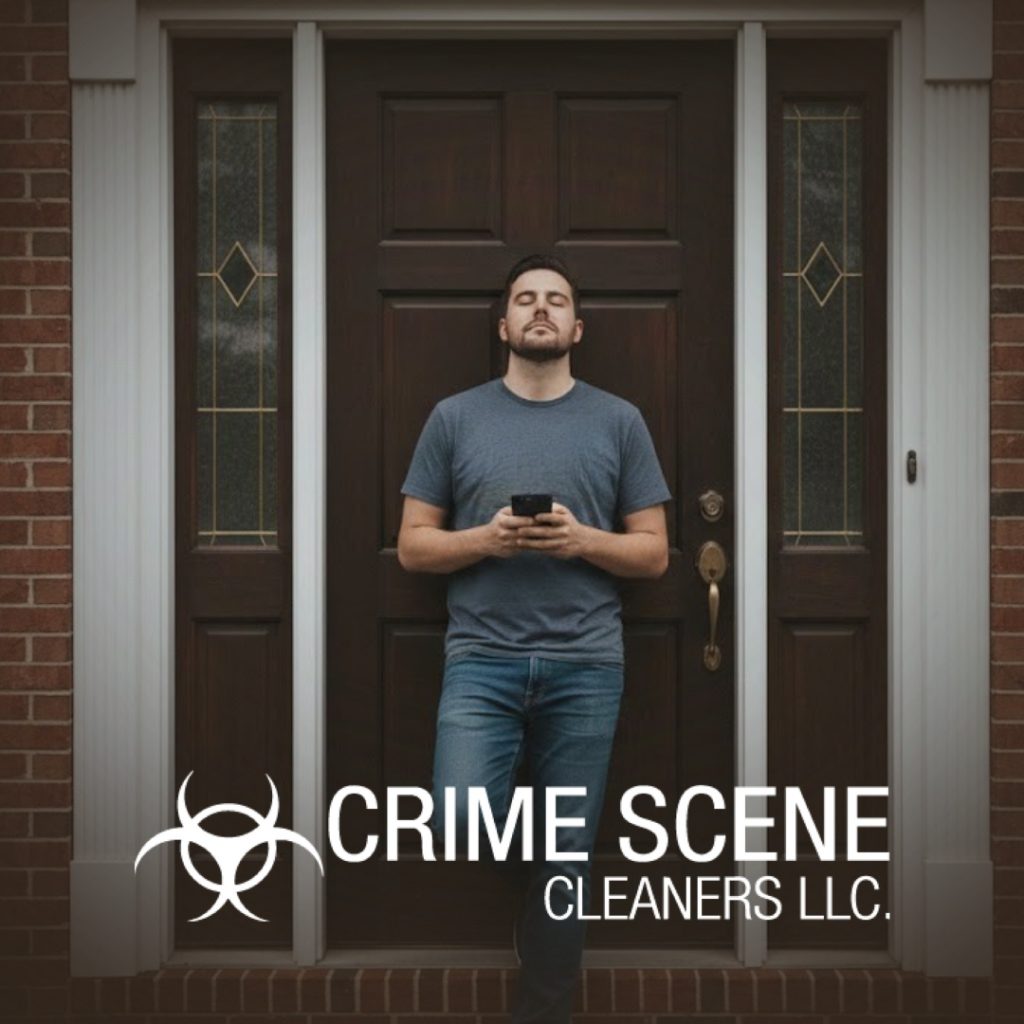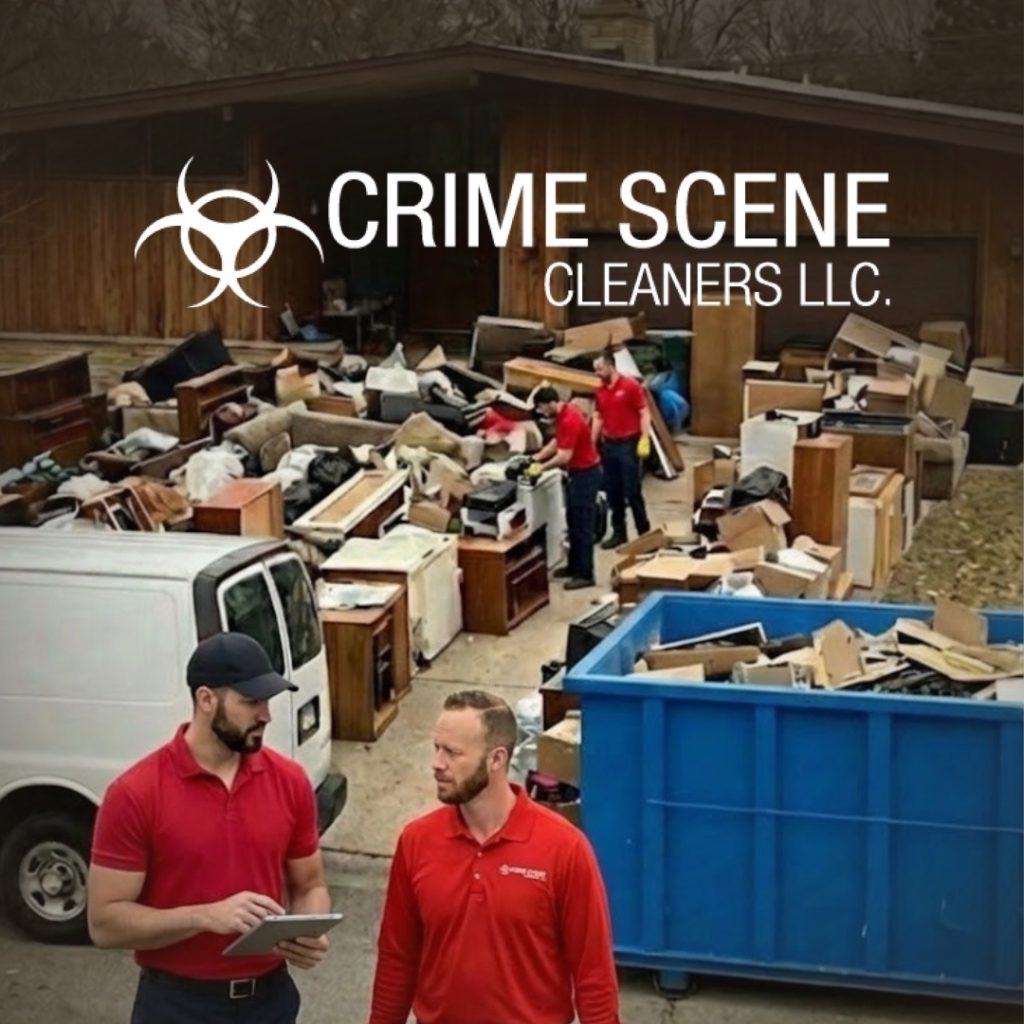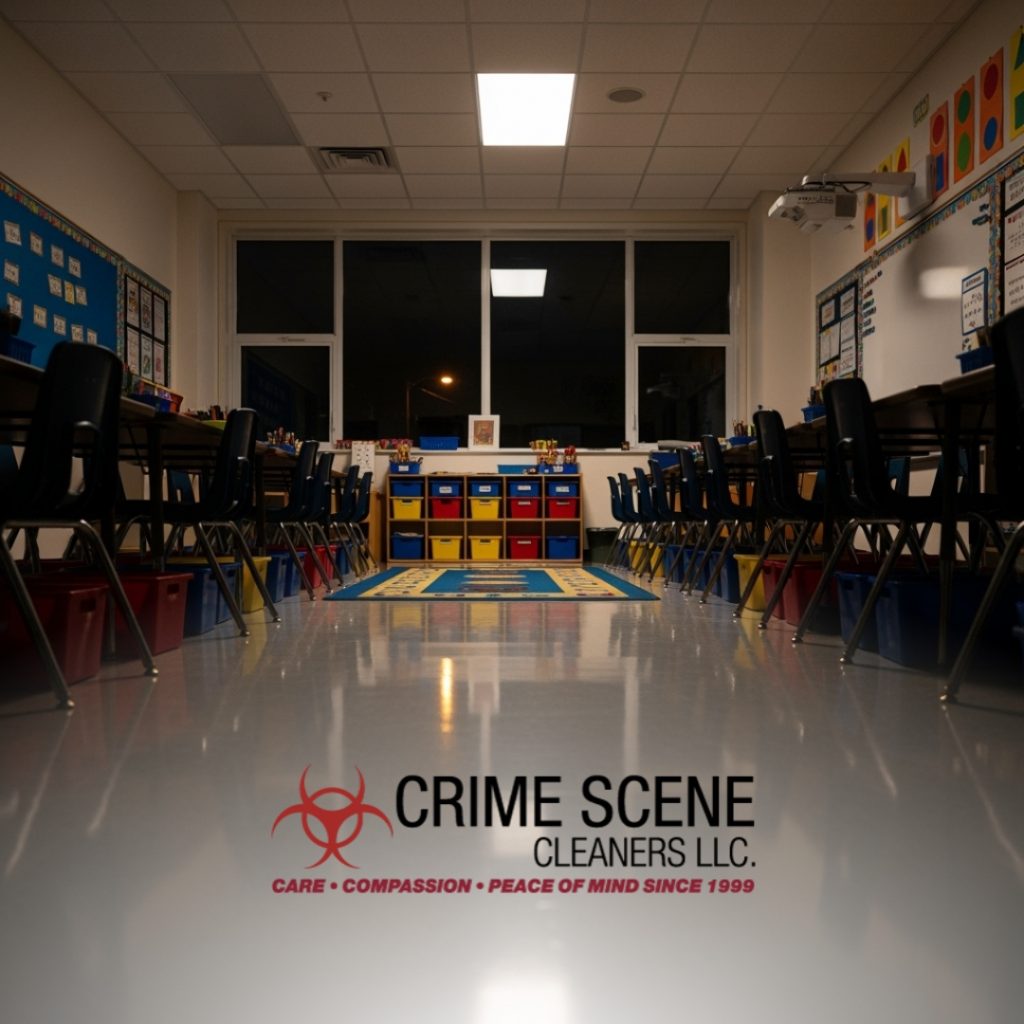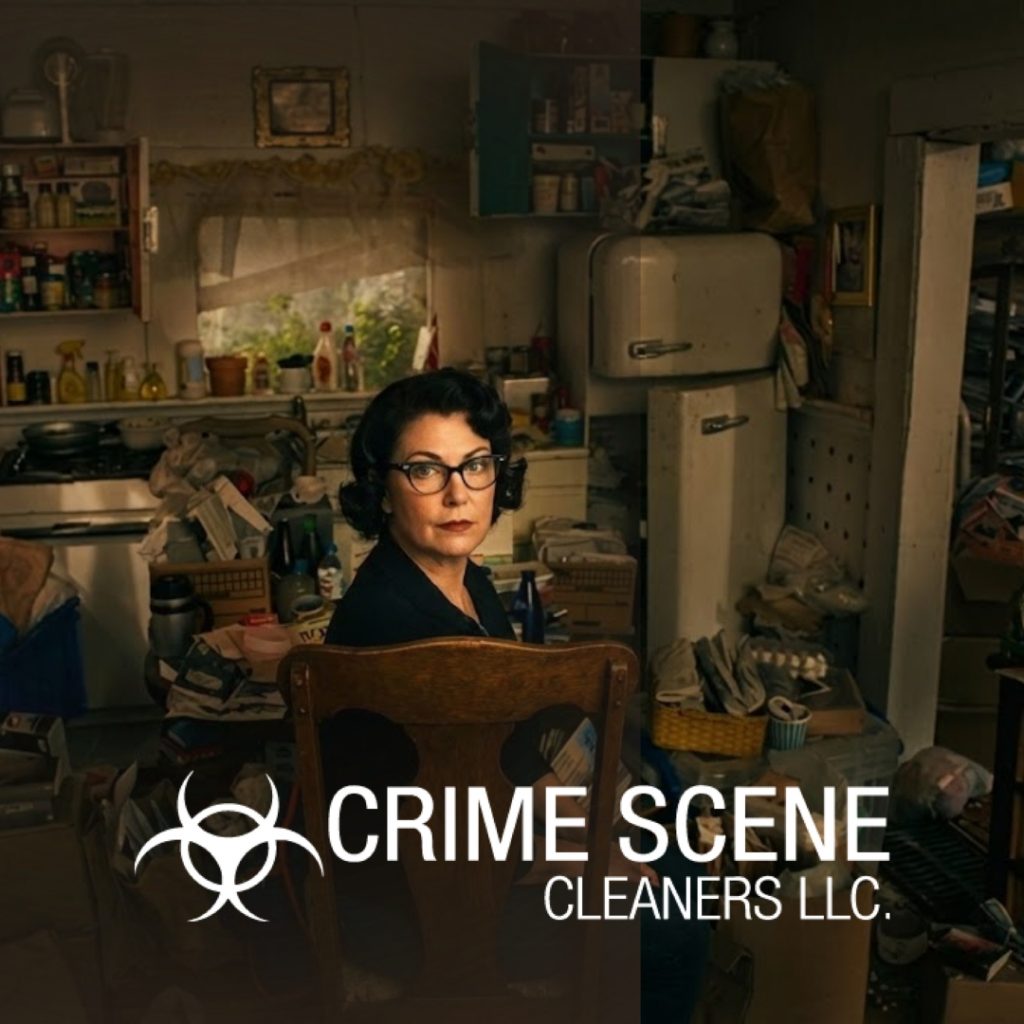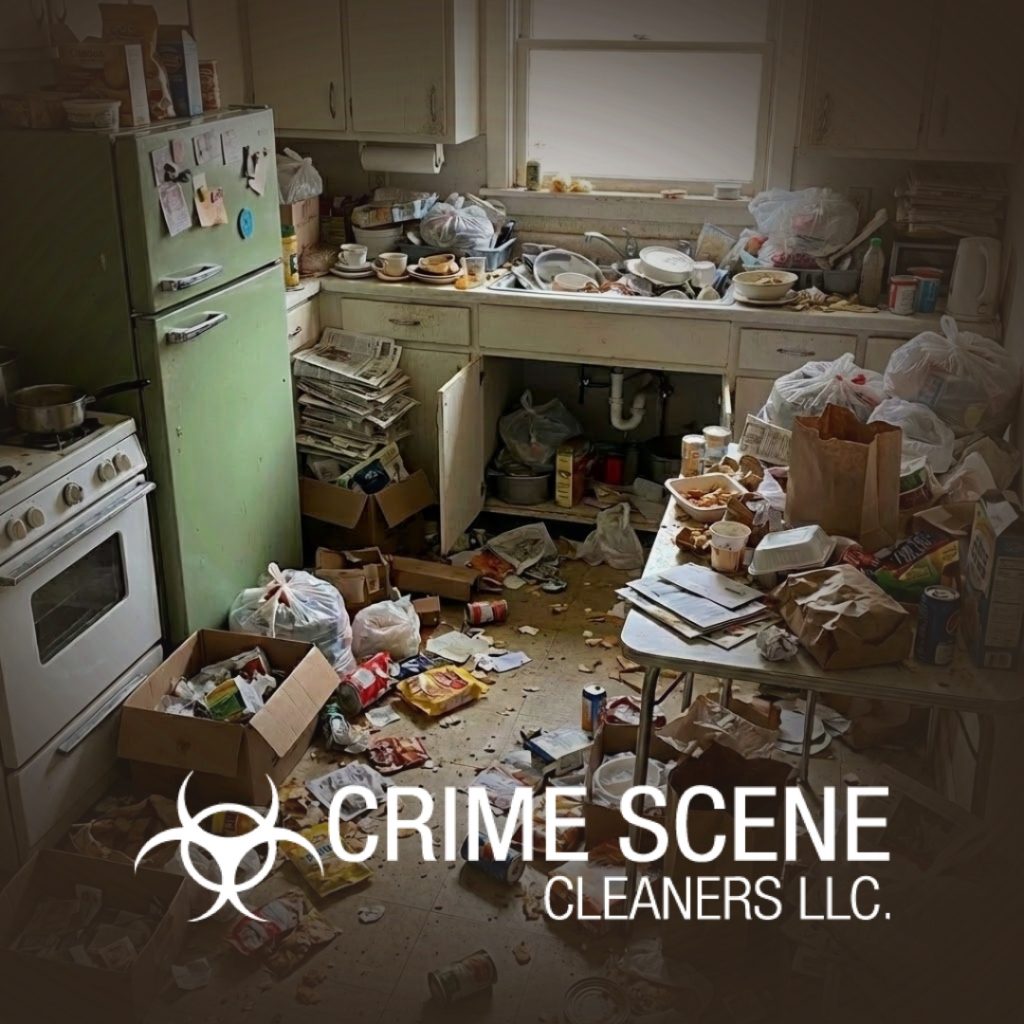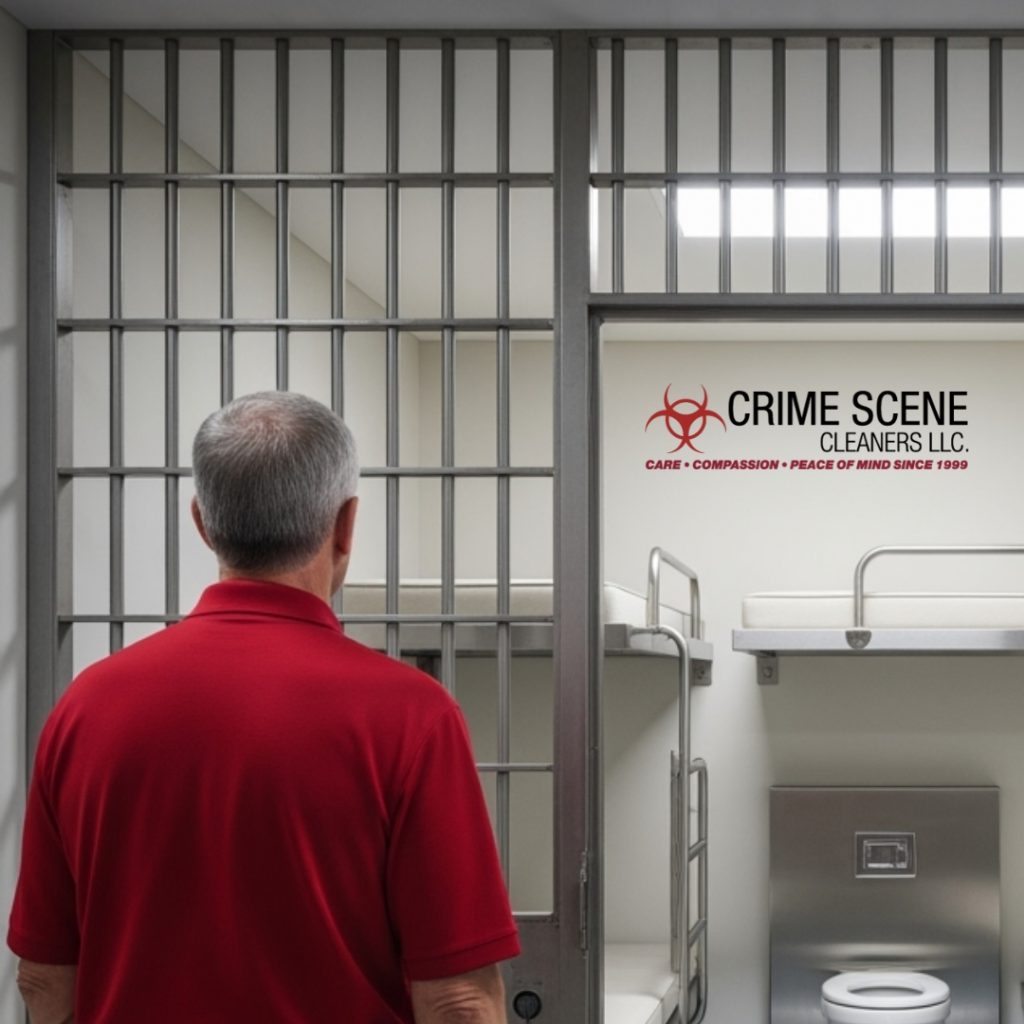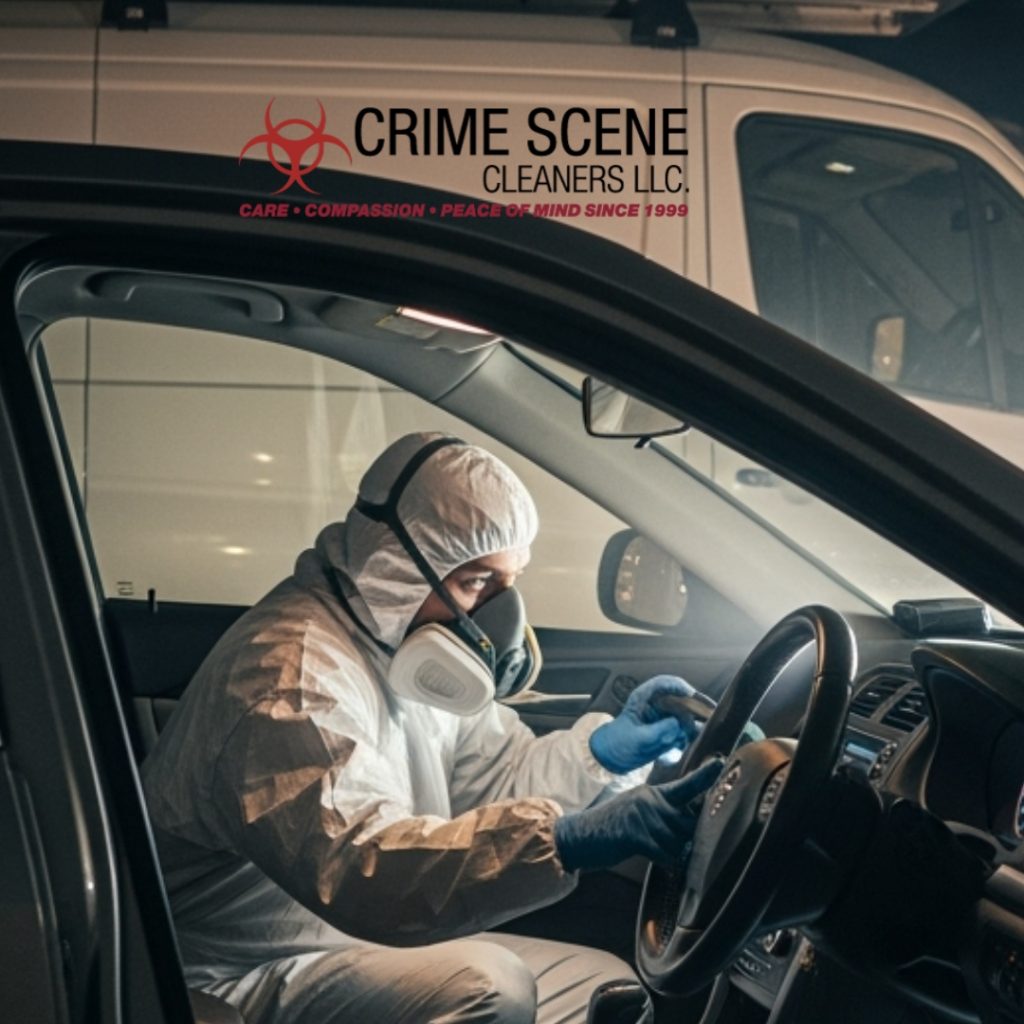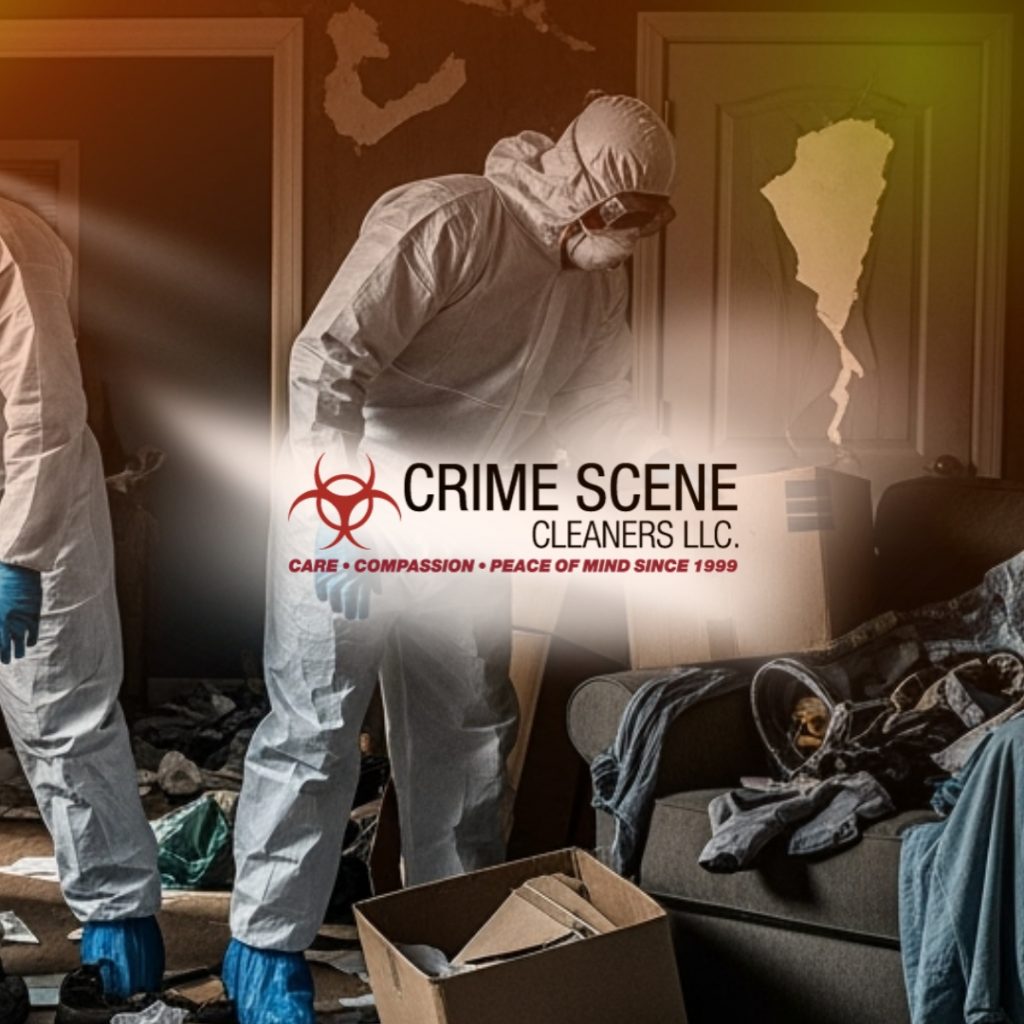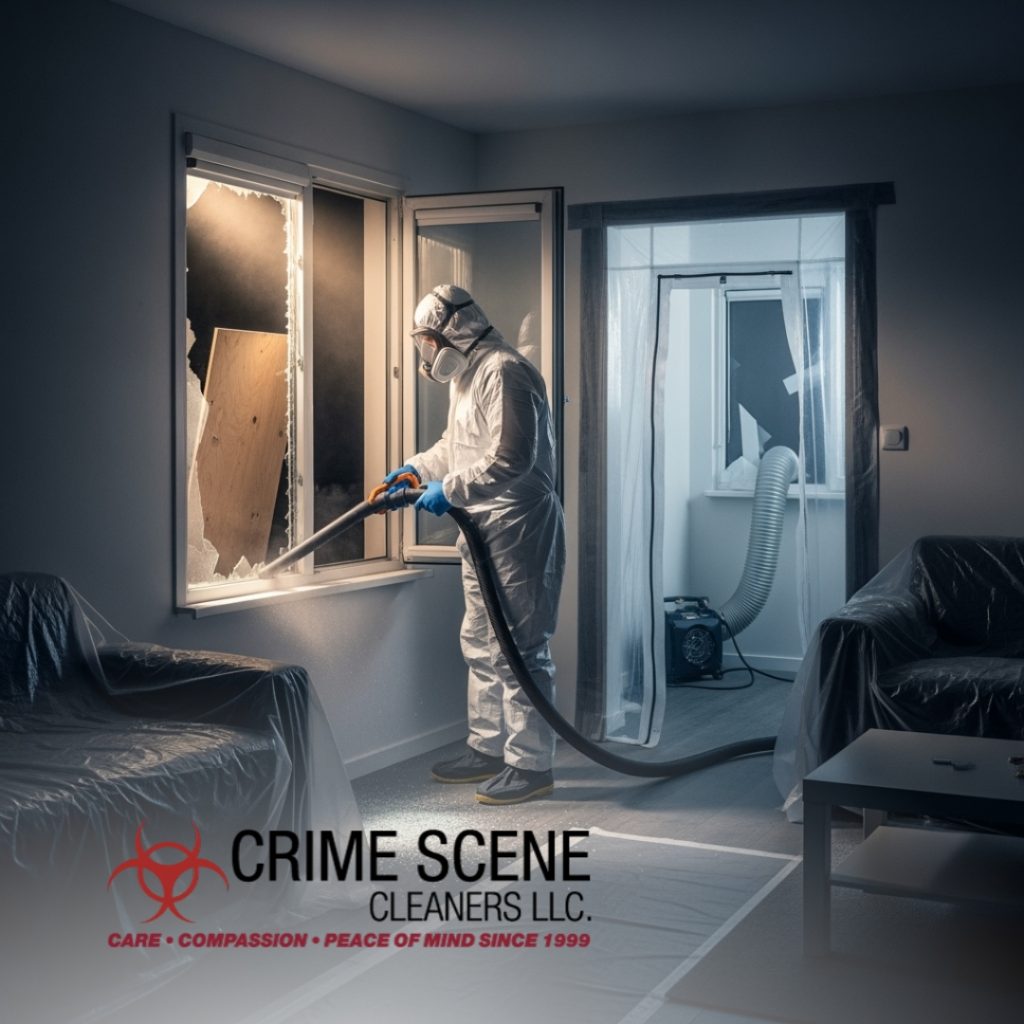Tear gas incidents leave more than an odor. They leave an ultra fine contaminant that settles on surfaces, buries into soft goods, and can travel through HVAC. Crime Scene Cleaners KC provides tear gas remediation across the Kansas City metro and throughout Missouri and Kansas so homes and businesses can be made safe again.
Only a fully trained professional who has the experience should handle this type of incident.
If you searched tear gas cleanup Kansas City, pepper spray residue removal KC, or CS gas cleanup near me, here is a clear, local guide to what happens next and how our team helps.
TEARGAS CLEANUP: https://crimescenecleanerskc.com/services/teargas-cleanup/
Why Tear Gas Cleanup Is Different
-
It is not just “gas.” Many devices release a fine powder that off gasses intensely. That powder can stay suspended and settle far from the point of entry.
-
Multiple formulas are used. Law enforcement may deploy different chemical irritants, so the cleanup plan must match the residue.
-
Entry often causes collateral damage. Projectiles may break windows and drive glass shards several feet into a room. Canisters can enter a wall cavity and continue releasing inside the void.
-
Some items cannot be guaranteed safe. Carpet, pad, and certain upholstered furniture may hold residue or glass shards and are commonly removed.
When Insurance May Help
If the person who caused the incident does not own the property, property insurance often applies, subject to your deductible. We provide photos and documentation to support claims.
Our Tear Gas Remediation Process
-
Assessment and safety plan
We walk the property with you, map points of entry, and identify rooms and systems affected, including HVAC returns and supply lines. -
Containment and controlled airflow
We establish work zones and manage airflow to limit spread while work is in progress. -
Careful deconstruction where needed
If a canister entered a wall cavity, we open and remove the affected section to access and treat the void. Carpet and pad in shard affected rooms are typically pulled and discarded. Salvageable contents may be packed out for cleaning in a controlled area. -
Dry capture and neutralization
We perform comprehensive HEPA vacuuming to capture fine particulate, then apply a neutralizing agent matched to the residue. Surfaces receive a methodical wipe down afterward. -
HVAC cleaning and filter changes
Because powder travels on air currents, we clean and neutralize the HVAC system and replace filters so contaminants are not redistributed. -
Final detailing and inspection
We complete a second pass wipe down, verify that odors are resolved at the source, and walk the space with you before turnover.
What We Can Save, and What We Remove
-
Often salvageable: painted walls and ceilings, hard flooring, cabinets, solid wood furniture, most appliances after surface treatment
-
Often removed: carpet and pad in rooms with glass shards or heavy residue, targeted drywall at canister entry points, certain upholstered items that cannot be validated after treatment
Our goal is to preserve what is truly safe and remove only what cannot be verified.
Common Tear Gas Scenarios We Handle
-
Occupied homes where entry was made through a living room or bedroom window
-
Apartments and condos with shared ducts and hallways that increase spread risk
-
Small businesses affected on the sales floor and in back offices
-
Vehicles with residue that migrated into vents and fabrics
We are a crime and trauma biohazard company, not a janitorial provider. Our focus is specialized decontamination, documentation, and safety.
How You Can Help Before We Arrive
-
Vent cautiously. If windows are intact and it is safe, light ventilation can help, but avoid turning on central HVAC that could spread residue.
-
Limit access. Keep people and pets out of impacted rooms to reduce tracking.
-
Do not vacuum or mop. Consumer tools can push residue deeper or aerosolize it.
-
Share incident details. Entry points, number of canisters observed, and rooms that felt most affected help us plan.
FAQs
How long does tear gas residue linger
Until it is properly captured, neutralized, and removed, fine particulates can persist on surfaces and inside ducts. Our combination of HEPA capture, neutralization, and HVAC cleaning addresses the cause, not just the smell.
Why can’t you just clean the carpet
Because of glass shards from broken windows and the way powder settles into fibers, carpet and pad often cannot be guaranteed safe after certain incidents. Removal is the standard of care.
Will insurance cover this
Often yes when the perpetrator does not own the property. We provide detailed documentation to support your claim and coordinate with adjusters.
Do you serve both Missouri and Kansas
Yes. Crime Scene Cleaners KC serves the Kansas City metro and communities across MO and KS with 24/7 availability.
Tear Gas Cleanup in the KC Metro
When a tear gas deployment leaves your home or business unlivable, you need a team that understands the chemistry, the construction, and the insurance piece. Contact Crime Scene Cleaners KC for tear gas remediation anywhere in the Kansas City area. We will make a difficult situation safe, step by step.
TEARGAS CLEANUP: https://crimescenecleanerskc.com/services/teargas-cleanup/
SPECIAL NOTE:
In homes or businesses where tear gas, also called CS or OC, has been used, do it yourself cleanup often makes the situation worse. CS is a fine crystalline irritant that settles onto every surface and into tiny cracks, while OC is an oily resin that clings to fibers, dust, and finishes. Without professional containment, opening windows, running fans, or vacuuming with a regular vacuum can reaerosolize residue and spread it through the air and the HVAC system, leading to coughing, burning eyes, skin irritation, and breathing difficulty for anyone nearby. Using steam, hot water, or high pressure washing can drive chemicals deeper into porous materials like drywall, carpet, and upholstery, which locks in odor and causes the space to feel contaminated again whenever humidity rises. Household cleaners are not designed for this problem, and strong solvents can smear OC across larger areas, while mixing common products, such as bleach with other cleaners, can create harsh gases that compound respiratory irritation. Improper handling of contaminated debris, such as bagging damp carpet, clothing, or filters without sealing, can expose trash handlers and create lingering odors in halls, elevators, and vehicles. Because residue hides in seams, returns, and under baseboards, missed pockets keep off gassing for weeks, which leads to repeat complaints, callbacks, and more demolition later. Personal protective equipment is essential, and without the correct respirator cartridges, gloves, and eye protection, skin burns, rashes, and asthmatic reactions are common. Many jurisdictions also treat some tear gas affected materials as regulated waste, so disposing of them improperly can create liability for property owners and employers. In short, well meaning efforts to wipe it up can spread contamination, increase health risks, and drive up total cost. A professional decontamination plan uses containment, negative air, HEPA filtration, source removal, and targeted neutralization to make the space safe, protect neighboring units, prevent cross contamination during transport, and document the work for insurers and property managers.


